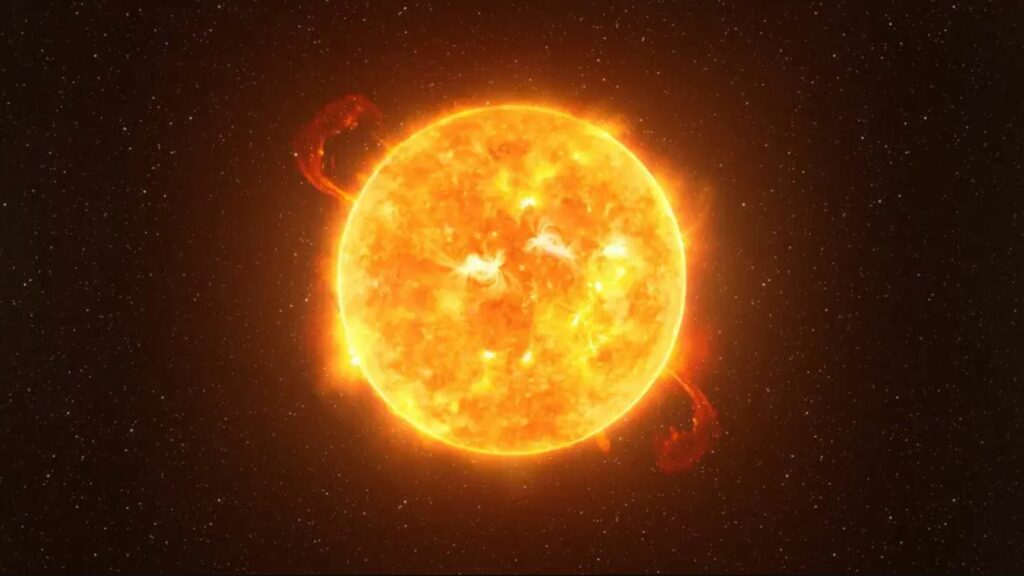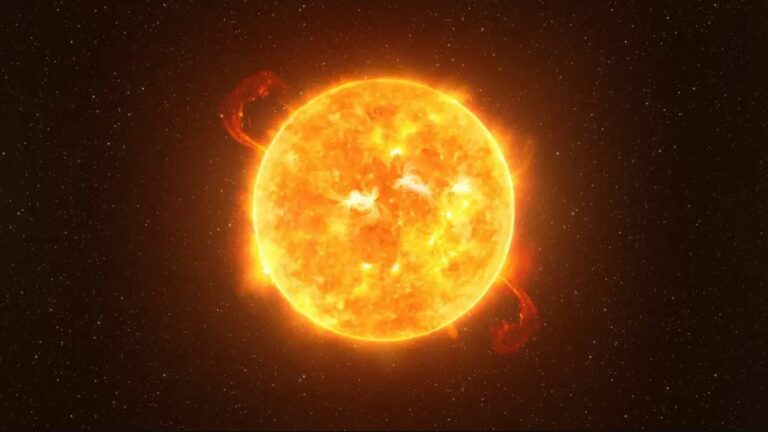Study Controversially Asserts Betelgeuse’s Proximity to Supernova Event
Tohoku University Astronomers Contend Betelgeuse’s Core Will Collapse Within a Few Decades after Carbon Depletion
In recent years, Betelgeuse, a red supergiant star located in the Orion constellation of the Milky Way galaxy, has exhibited extraordinary activity, transitioning from a state of extreme dimness to a remarkable surge in brightness, experiencing a luminosity increase of approximately 50 percent.

dzika_mrowka/iStock
Whenever changes occur within this particular star, speculation about an impending supernova event intensifies. While it is undeniable that Betelgeuse will eventually erupt as a supernova, the exact timing remains uncertain due to intricate chemical processes occurring deep within its core.
The prevailing scientific consensus suggests that the supernova event will not happen in our lifetime. However, a contentious new study postulates that it could occur within the next few decades. According to astronomers from Tohoku University, “the core will collapse in a few tens years after the carbon exhaustion.”
These scientist on planet Earth conclude that I’m “in the late stage of core carbon burning, and a good candidate for the next Galactic supernova”. As if I didn’t know that myself…https://t.co/JXWR23fU0H
— Betelgeuse Status (@betelbot) June 2, 2023
The key determinant of this explosion lies in the star’s fuel source. By examining the fuel that sustains the star, scientists can potentially predict its eventual supernova explosion.
The challenge lies in the inability to directly observe the core of the star, where fusion reactions take place. This lack of visibility hampers scientists’ ability to accurately assess the situation.
In the recently published study, available on a pre-print server, the research team affirms that “Betelgeuse is in the late stage of core carbon burning and a strong contender for the next Galactic supernova.”
Over billions of years, this red giant star has predominantly fused hydrogen into helium. The study suggests that Betelgeuse has progressed beyond the hydrogen-to-helium conversion stage that our Sun is currently in, and is now relying on carbon as its primary fuel source. However, experts hold varying opinions regarding this conclusion.
The carbon-burning process within the star encompasses multiple phases, making it challenging to predict when the supernova event will occur. Presently, conclusive evidence regarding the star’s position within these carbon phases is lacking.
The researchers note, “In fact, it is not possible to determine the exact evolutionary stage because surface conditions hardly change in the late stage close to the carbon exhaustion and beyond.” This implies that astronomers have limited knowledge of the chemical processes occurring in the star’s core.
Recent reports of my imminent demise are indeed a bit premature, @chrislintott https://t.co/tCS0hmMDCG
— Betelgeuse Status (@betelbot) June 7, 2023
Reports indicate that some experts dispute the notion that Betelgeuse is in its final stages and suspect that the star still relies on helium as its primary fuel.
The latest study draws insights from observations and computational models based on the star’s pulse cycles, encompassing periods of brightness and dimness.
Located 642 light-years away from Earth, Betelgeuse presents our best opportunity to witness a supernova event, yet it remains steadfast in defying expectations.
The study has been accepted for publication in the journal Monthly Notices of the Royal Astronomy Society.
Study Abstract:
Betelgeuse is a well-known bright red supergiant that shows semi-regular variations with four approximate periods of 2200, 420, 230, and 185 days. While the longest period was customarily regarded as LSP (long secondary period) of unknown origin, we identify the ~2200-d period as the radial fundamental mode, and the three shorter periods as the radial first, second, and third overtones. From a nonadiabatic pulsation analysis including the pulsation/convection coupling, we have found that these radial pulsation modes are all excited in the envelope of a model in a late stage of the core-carbon burning. Models with similar pulsation property have masses around 11M_\odot (19M_\odot at ZAMS) with luminosities (log L/L_\odot =5.27~5.28) and effective temperatures (log T_{eff}\approx 3.53) that are consistent with the range of the observational determinations. We also find that a synthetic light curve obtained by adding the fundamental and the first-overtone mode qualitatively agrees with the light curve of Betelgeuse up to the Great Dimming. We conclude that Betelgeuse is in the late stage of core carbon burning, and a good candidate for the next Galactic supernova.
Do not forget to share your opinion with us to provide you with the best posts !





0 Comments